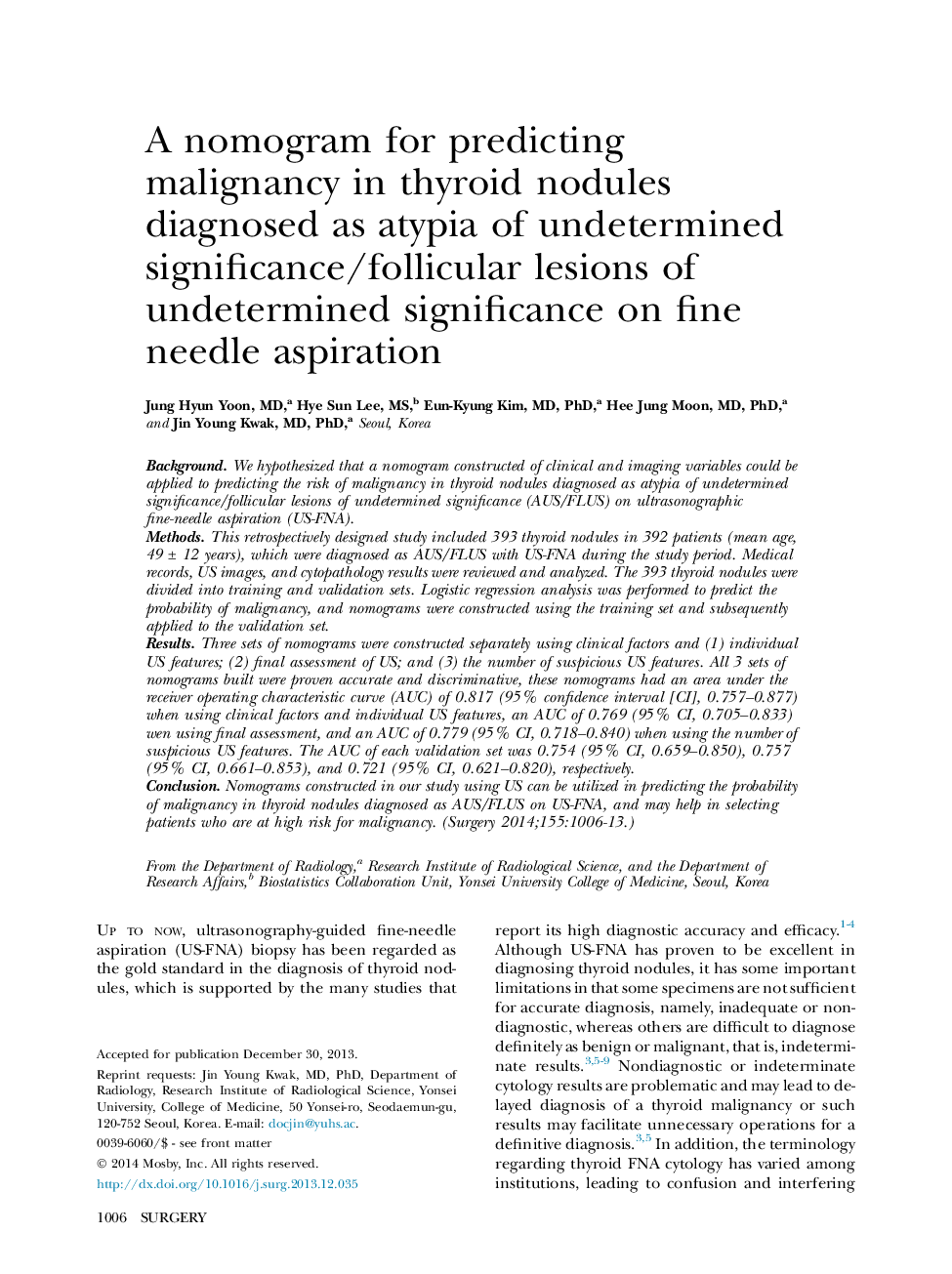| Article ID | Journal | Published Year | Pages | File Type |
|---|---|---|---|---|
| 4308058 | Surgery | 2014 | 8 Pages |
BackgroundWe hypothesized that a nomogram constructed of clinical and imaging variables could be applied to predicting the risk of malignancy in thyroid nodules diagnosed as atypia of undetermined significance/follicular lesions of undetermined significance (AUS/FLUS) on ultrasonographic fine-needle aspiration (US-FNA).MethodsThis retrospectively designed study included 393 thyroid nodules in 392 patients (mean age, 49 ± 12 years), which were diagnosed as AUS/FLUS with US-FNA during the study period. Medical records, US images, and cytopathology results were reviewed and analyzed. The 393 thyroid nodules were divided into training and validation sets. Logistic regression analysis was performed to predict the probability of malignancy, and nomograms were constructed using the training set and subsequently applied to the validation set.ResultsThree sets of nomograms were constructed separately using clinical factors and (1) individual US features; (2) final assessment of US; and (3) the number of suspicious US features. All 3 sets of nomograms built were proven accurate and discriminative, these nomograms had an area under the receiver operating characteristic curve (AUC) of 0.817 (95% confidence interval [CI], 0.757–0.877) when using clinical factors and individual US features, an AUC of 0.769 (95% CI, 0.705–0.833) wen using final assessment, and an AUC of 0.779 (95% CI, 0.718–0.840) when using the number of suspicious US features. The AUC of each validation set was 0.754 (95% CI, 0.659–0.850), 0.757 (95% CI, 0.661–0.853), and 0.721 (95% CI, 0.621–0.820), respectively.ConclusionNomograms constructed in our study using US can be utilized in predicting the probability of malignancy in thyroid nodules diagnosed as AUS/FLUS on US-FNA, and may help in selecting patients who are at high risk for malignancy.
